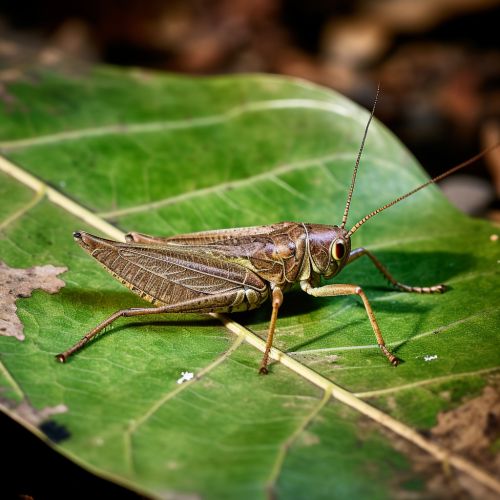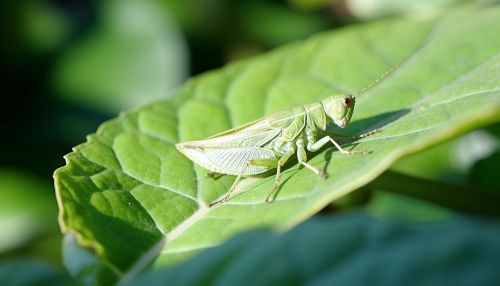Short-horned grasshopper
Taxonomy and Evolution
The Short-horned grasshopper, also known as the Acrididae, belongs to the order Orthoptera, which also includes long-horned grasshoppers and crickets. This family is the most diverse and widely distributed group of grasshoppers, with over 10,000 species identified worldwide. The name 'short-horned' refers to the relatively short antennae of these insects, distinguishing them from the long-horned grasshoppers.


The Acrididae family is believed to have evolved during the Cretaceous period, around 145 to 66 million years ago. The fossil record of Acrididae is relatively sparse, but the oldest known fossil of a short-horned grasshopper dates back to the Jurassic period, indicating that their lineage is quite ancient.
Morphology and Anatomy
Short-horned grasshoppers are characterized by their robust body, large compound eyes, and short antennae. The size of these insects can vary greatly, ranging from 5 mm to 11 cm in length, depending on the species. The body coloration is often green, brown, or gray, which provides excellent camouflage in their natural habitats.
The anatomy of a short-horned grasshopper includes three main body parts: the head, thorax, and abdomen. The head houses the antennae, eyes, and mouthparts. The thorax, which is divided into three segments, carries the wings and legs. The abdomen contains the digestive and reproductive organs.
Behavior and Ecology
Short-horned grasshoppers are primarily herbivorous, feeding on a wide range of plants. Some species are known to be polyphagous, meaning they can feed on multiple types of plants, while others are more specialized in their diet. Their feeding behavior can significantly impact plant communities and can lead to economic losses in agriculture.
These insects are known for their ability to jump great distances to escape predators. They achieve this by rapidly extending their hind legs, which are specially adapted for jumping. Some species are also capable of flight, using their wings to cover longer distances.
Short-horned grasshoppers have a variety of predators, including birds, reptiles, and other insects. They employ several strategies to avoid predation, such as camouflage, warning coloration, and mimicry.
Reproduction and Life Cycle
The life cycle of the short-horned grasshopper consists of three stages: egg, nymph, and adult. The female grasshopper lays her eggs in the soil or plant material, where they overwinter and hatch in the spring. The emerging nymphs resemble small adults but lack wings and reproductive organs. They undergo several molts, gradually developing wings and reproductive organs until they reach adulthood.
Economic and Ecological Significance
Short-horned grasshoppers play a crucial role in ecosystems as plant consumers and prey for various animals. However, they can also be significant agricultural pests, causing damage to crops and pastures. In some regions, they are also collected for human consumption, contributing to the diet of local communities.
